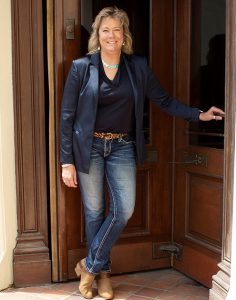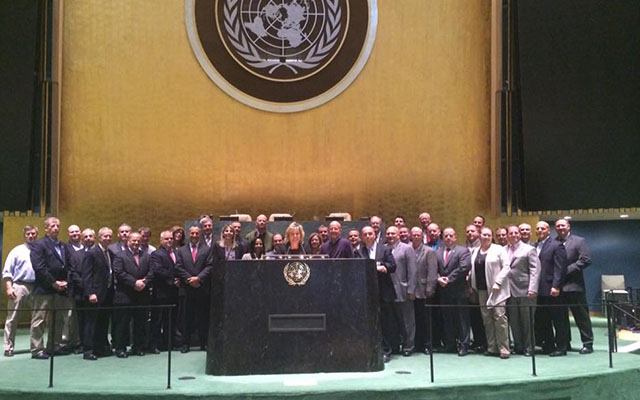First Responders to the First Responders by Heather Issovran
“No One Can Do Everything, but Everyone Can Do Something”
Max Lucado
Cops, soldiers, fire personnel, emergency managers, and other first responders run toward the danger. The adrenaline filters through their body to save lives, property, and ideals that could cost them their lives, limbs, and mental health. Their daily work is to respond to the worst day in the lives of the citizens they serve. The risks they take every time they go to work are an incredible responsibility and reward. They risk everything to protect the lives and property of their community as well as the ideals of our nation. I have always admired men and women who served a cause greater than themselves.
Like many after 9/11, the anger of the attacks engendered a need in me to do SOMETHING. When a good friend told me about a job at a nearby Naval base, I was curious, and a bit intimidated. I definitely wanted to apply. I am not a first responder. However, when I learned that the job I was applying for was to serve those who were, I was incredibly proud to get the offer. At the beginning of 2003, I was hired as an operations coordinator for the Center for Homeland Defense and Security(CHDS), a brand new center at the Naval Postgraduate School that offered the country’s first master’s degree in homeland security. It was an exciting time. In the shadow of all the death and destruction, our task was to create a cadre of first responders who could think critically about our domestic threats. We were an answer to the 9/11 Commission Report’s criticism that the nation suffered from a “failure of imagination.” Everyone at CHDS was passionate about working together to create policies and strategies to make our country safer. CHDS is a place where we can test ideas that could be implemented faster because the people writing the policies were the ones who had the power to put them into action. Our students are encouraged to be provocative, collaborative, and think beyond the day’s crisis. It was ok to fail in our classroom in order to succeed in the real world.
After a few months as a coordinator, our director, Paul Stockton, looked at me one day and said, “I want you to be the face of CHDS!” I was excited because I loved working with our students and helping them get through the program. It was gratifying to see them ascend leadership and get promoted. Over time, I became the operations director. I felt the pull to help the students even more and left that position to develop our strategic communications department. I traveled to every state in the country to work with the leadership of local, state, tribal, territorial, federal, and military agencies to convince them to send their best and brightest to CHDS. It was quite an ask because most of the people we wanted were already busy doing their jobs at the mid to senior levels. We want them to pull away for 18 months to do actual research, make a difference, and improve their agencies’ security. In addition, I help all our alums retain a sense of community, to call on each other when they need to learn new smart practices. One of the best parts of my job is to tell the stories of how our graduates, students, and faculty implement what they have learned. It is not enough for CHDS students to learn. They must iterate and innovate to keep up with their dynamic threats. I am proud that our graduates work hard and collaborate in our alums community for years and sometimes decades after graduation.
Working alongside these heroes is my act of service. I am filled with adrenaline whenever I address a group of our alumni or their agencies. After almost 20 years, I still get excited to tell our stories and recruit more agencies to attend our programs. It is an energy that is contagious and born out of a passion for helping those who selflessly help all of us in our quest to be safe in our communities and nation. I have the best job in the world! ❦
 About the Author
About the Author
For two decades, Heather Issvoran has been the bridge between federal, state, local, and tribal homeland security practitioners and officials with global thought leaders on resilience, homeland security, and emergency management. Ms. Issvoran scours the country ensuring the Center enrolls the very best candidates for its executive and graduate programs. Her responsibilities include contract support for strategic communications, agency outreach, student and alumni relations, recruitment, and public affairs. She supervises and coordinates Center communications on the national level for print, broadcast, and web-based media, working closely with both the Naval Postgraduate School and the U.S. Department of Homeland Security leadership on these endeavors.
Ms. Issvoran leads a strategic communications operation and department that shares, shapes, and demonstrates the impact and success stories of CHDS students, faculty, staff, and alumni and reaches out to a national audience of academics and practitioners.
In her previous position in contract support for the Center as the Director of Program Operations, Ms. Issvoran enhanced and streamlined program operations while working with government partners to accommodate additional programmatic goals.
Ms. Issvoran provided logistical planning, coordination, and execution of the Center’s master’s degree programs, executive leaders programs, conferences, and workshops. Prior to the Center, Ms. Issvoran worked as the Director for Human Resources for FamilyCare of Monterey Bay. In this position, she was responsible for human resources for 40 employees and 5 physicians. She also successfully helped lead the company through bankruptcy and corporate reorganization.
Ms. Issvoran has a background in the fields of education and marketing in addition to her operations experience. She holds a Bachelor of Arts degree in Communication Studies from Westmont College in Santa Barbara, California.
